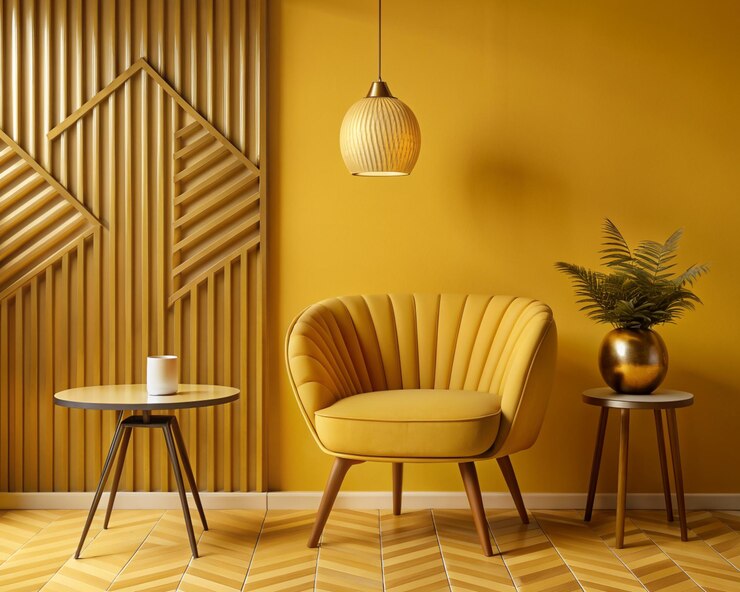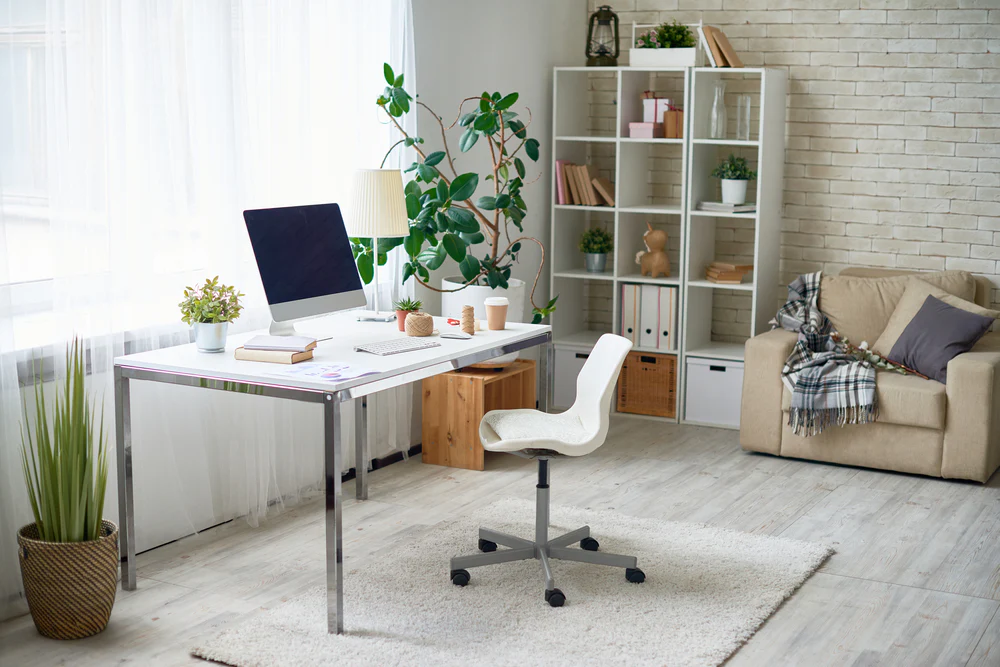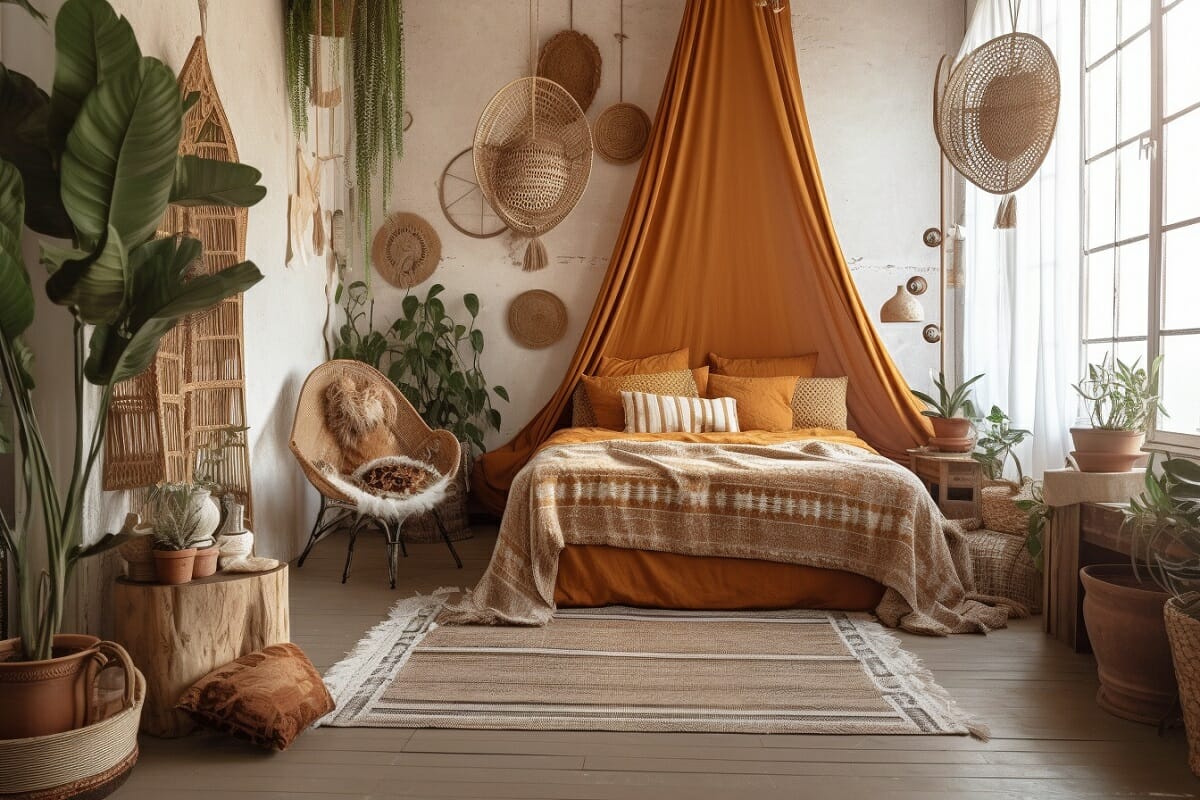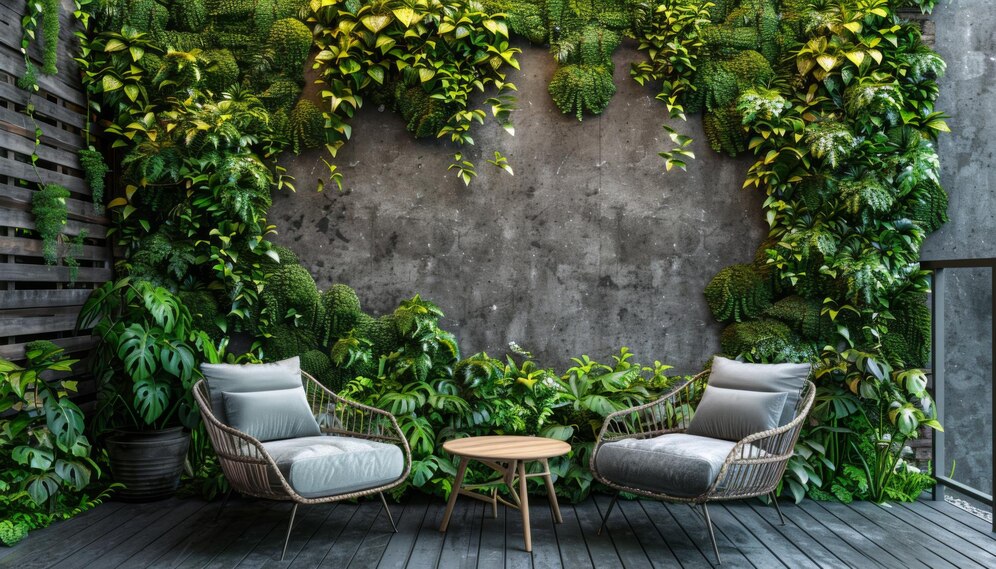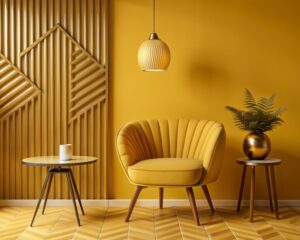
Discover the ultimate guide to accent walls! Learn how to choose colors, textures, and placement to transform your space with bold and creative designs. Explore ideas for both residential and commercial use.
Introduction
Accent walls are more than just a design trend; they are a versatile tool in interior decorating that allows homeowners to inject personality, color, and texture into their spaces. By focusing attention on a single wall, accent walls create focal points, enhance architectural features, and establish a mood or theme within a room. In this comprehensive guide, we will explore the various aspects of accent walls, from choosing the right wall and selecting colors to incorporating textures and balancing your design elements.
Choosing the Perfect Wall for an Accent
When selecting a wall for an accent, the primary goal is to identify a surface that will naturally draw the eye. Often, this is a wall that serves as a backdrop to significant features such as a fireplace, a headboard, or a large piece of artwork. For example, a wall behind the bed in a bedroom can become a stunning focal point when painted in a contrasting color or adorned with textured wallpaper. To determine the ideal wall, consider the room’s layout, the existing decor, and the way natural and artificial light interacts with the space. Walls with architectural details or built-ins can also be excellent choices for accentuating these features and adding depth to the room.
Selecting the Right Color for Your Accent Wall
The color of your accent wall can dramatically influence the overall atmosphere of the room. Bold and vibrant hues, such as deep blues, rich greens, or striking reds, can make a powerful statement and energize the space. Conversely, softer shades like pastel pinks, serene blues, or muted grays can create a calming effect and add subtle elegance. When choosing a color, consider how it complements the existing palette of the room. For example, if the other walls are painted in neutral tones, a bold accent color can create a striking contrast and draw attention to the accent wall. Additionally, you might want to coordinate the accent color with other elements in the room, such as textiles, furniture, or artwork, to achieve a cohesive and harmonious look.
Incorporating Texture and Patterns
In addition to color, texture plays a crucial role in creating an effective accent wall. Textured finishes, such as stucco, brick, or wood paneling, can add depth and interest to the space, creating a visually dynamic effect. Wallpaper with intricate patterns or 3D textures can also enhance the impact of the accent wall. For instance, a wall covered in textured wallpaper can become a captivating backdrop that adds character and sophistication to the room. When incorporating texture, it is essential to consider how it interacts with other elements in the room. For example, a highly textured wall may require simpler furniture and decor to prevent the space from feeling overcrowded.
Balancing the Accent Wall with the Rest of the Room
Creating a successful accent wall involves more than just selecting a color or texture; it requires careful consideration of how the accent wall interacts with the rest of the room. The goal is to create a balanced and cohesive design that enhances the overall aesthetic. To achieve this, consider the scale and proportion of the accent wall in relation to the room. For instance, a large, bold accent wall can be balanced with more subdued elements, such as neutral-colored furniture or simple decor. Conversely, a smaller accent wall may need additional visual elements to ensure it stands out effectively. By thoughtfully integrating the accent wall with other design elements, you can create a harmonious and visually appealing space.

Maintaining and Caring for Your Accent Wall
Different materials and finishes require varying levels of maintenance and care. For instance, darker paint colors may show fingerprints and smudges more easily, necessitating regular cleaning to maintain their appearance. Textured surfaces, such as wallpaper or wood paneling, may require more upkeep to prevent wear and tear. It is important to understand the specific care requirements of your chosen materials and to implement a cleaning and maintenance routine that preserves the accent wall’s integrity and appearance over time. Regular touch-ups and careful cleaning can help ensure that the accent wall continues to enhance the room’s aesthetic for years to come.
The Impact of Accent Walls on Room Lighting
Lighting plays a significant role in how an accent wall is perceived. Natural light can enhance the color and texture of the accent wall, while artificial lighting can create different effects depending on its intensity and placement. For example, wall sconces or track lighting can highlight the texture and details of an accent wall, creating dramatic shadows and enhancing its visual impact. When planning your lighting scheme, consider how it will interact with the accent wall and how it will affect the overall ambiance of the room. Proper lighting can enhance the accent wall’s features and contribute to the room’s overall atmosphere.
Creative Uses for Accent Walls
Accent walls are not limited to traditional paint or wallpaper. Creative uses for accent walls can include murals, art installations, or even repurposed materials. For instance, a wall featuring a hand-painted mural can become a unique and personal expression of your style, while a wall adorned with an art installation can create a gallery-like feel. Additionally, repurposed materials, such as reclaimed wood or vintage tiles, can add character and historical charm to the accent wall. By thinking outside the box and exploring creative possibilities, you can achieve a truly distinctive and personalized look for your space.
Incorporating Accent Walls in Different Rooms
Accent walls can be effectively used in various rooms throughout the home, each serving a different purpose and enhancing the room’s function and style. In living rooms, an accent wall can create a focal point for a fireplace or entertainment center. In bedrooms, an accent wall behind the bed can create a cozy and inviting atmosphere. In dining rooms, an accent wall can highlight a feature wall or provide a backdrop for a dining table. Each room presents unique opportunities for using accent walls to enhance the design and functionality of the space.
Trends and Innovations in Accent Walls
Interior design trends and innovations continually evolve, and accent walls are no exception. Current trends may include the use of bold colors, geometric patterns, or sustainable materials. Innovations in technology, such as virtual wallpaper or advanced paint finishes, offer new possibilities for creating dynamic and personalized accent walls. Staying informed about the latest trends and innovations can inspire new ideas and approaches for incorporating accent walls into your home design.
DIY vs. Professional Installation
Deciding between a DIY approach and professional installation for your accent wall depends on your skill level, the complexity of the design, and your budget. DIY projects can be cost-effective and provide a sense of personal achievement, but they may require time, effort, and a certain level of expertise. Professional installation ensures a high-quality finish and can handle more complex designs or materials. When choosing between DIY and professional installation, consider the scope of the project and your own preferences and capabilities.
Cost Considerations for Accent Walls
The cost of creating an accent wall can vary widely depending on the materials, colors, and textures chosen. Paint is typically the most cost-effective option, while high-end wallpaper, textured finishes, or custom installations can be more expensive. It is important to establish a budget and explore different options to find a solution that meets your design goals and financial constraints. By carefully planning and budgeting, you can achieve a stunning accent wall that enhances your space without overspending.

Accent Walls in Small vs. Large Spaces
The size of the room can influence the impact of an accent wall. In smaller spaces, a single accent wall can make a significant difference without overwhelming the room. In larger spaces, multiple accent walls or larger-scale designs may be appropriate to create balance and visual interest. When working with small spaces, consider using lighter colors or subtle textures to avoid making the room feel cramped. In larger spaces, bolder colors and more elaborate designs can be effective in creating focal points and enhancing the room’s overall aesthetic.
Accent Walls and Architectural Features
Accent walls can be used to highlight or complement architectural features in a room. For example, an accent wall behind a fireplace can draw attention to the feature and create a cohesive design. Similarly, an accent wall in a hallway or entryway can enhance architectural details and create a welcoming atmosphere. By strategically using accent walls to complement architectural features, you can enhance the room’s design and create a more visually appealing space.
Seasonal and Thematic Accent Walls
Accent walls can be adapted to reflect seasonal changes or thematic designs. For example, a warm, cozy accent wall in rich, earthy tones can create a welcoming atmosphere during the winter months, while a fresh, vibrant accent wall in bright colors can invigorate the space for spring and summer. Thematic accent walls, such as those inspired by travel, nature, or personal interests, can add a unique and personal touch to the room. By changing or updating accent walls to reflect seasonal or thematic preferences, you can keep your space feeling fresh and dynamic.
Accent Walls and Feng Shui
Incorporating accent walls into your design can also align with principles of Feng Shui, which emphasizes harmony and balance in living spaces. For instance, choosing colors that correspond with specific Feng Shui elements or positioning the accent wall to enhance the flow of energy in the room can contribute to a balanced and harmonious environment. Understanding how accent walls interact with Feng Shui principles can help create a space that promotes well-being and positive energy.
Accent Walls in Commercial Spaces
Accent walls are not limited to residential design; they can also be effectively used in commercial spaces. In offices, retail stores, and restaurants, accent walls can create a welcoming atmosphere, highlight brand colors, or establish a specific theme. For example, a bold accent wall in a retail store can draw attention to merchandise, while a sophisticated accent wall in an office can enhance the professional ambiance. By applying the principles of accent wall design to commercial spaces, businesses can create engaging and visually appealing environments.
Conclusion
Accent walls offer a powerful and flexible design tool for transforming any space. Whether through bold colors, unique textures, or creative patterns, accent walls can enhance the aesthetic appeal and functionality of a room. By carefully selecting the right wall, color, and texture, and by balancing the design with the rest of the room, you can achieve a striking and cohesive look that reflects your personal style and enhances your living environment. As you explore the possibilities of accent walls, consider how they can elevate your space and create a truly personalized and dynamic design.

